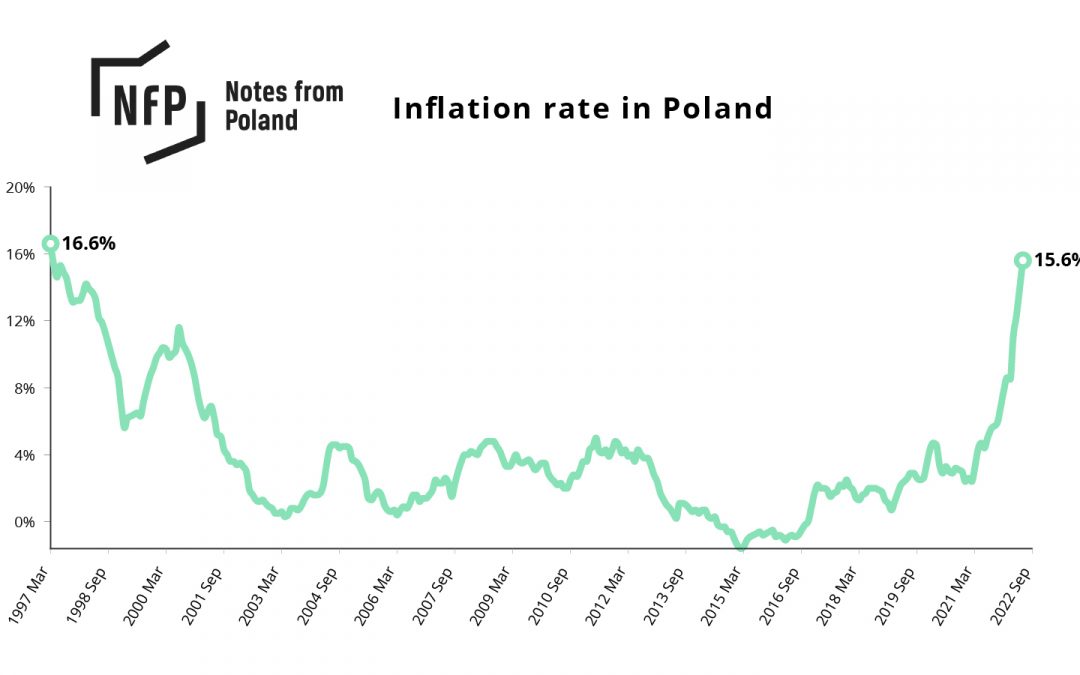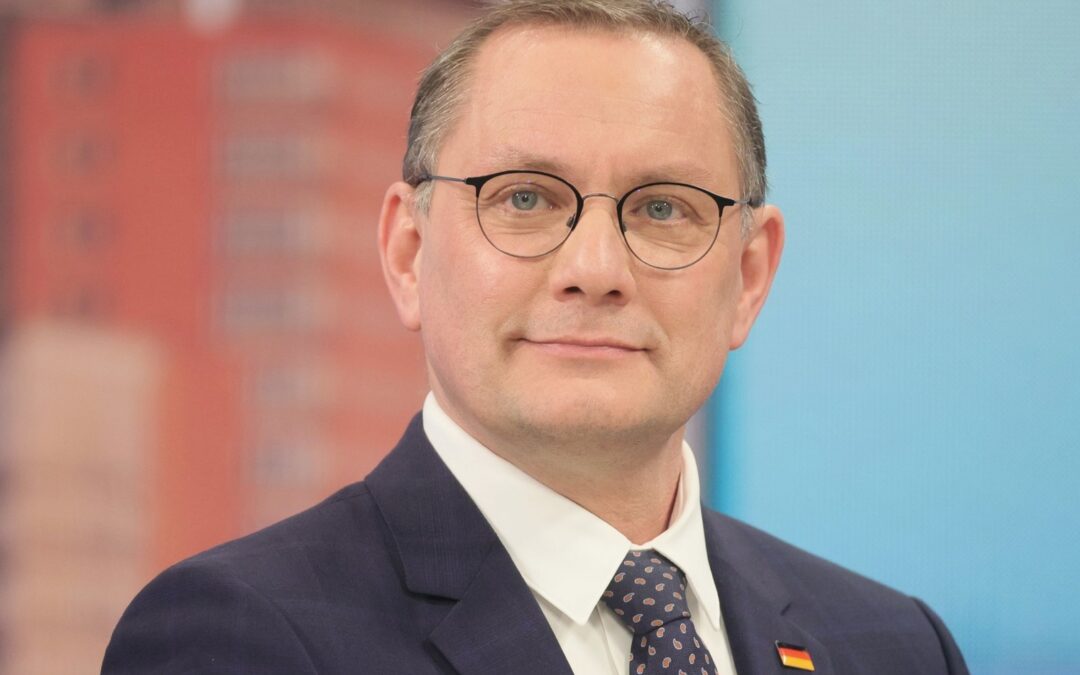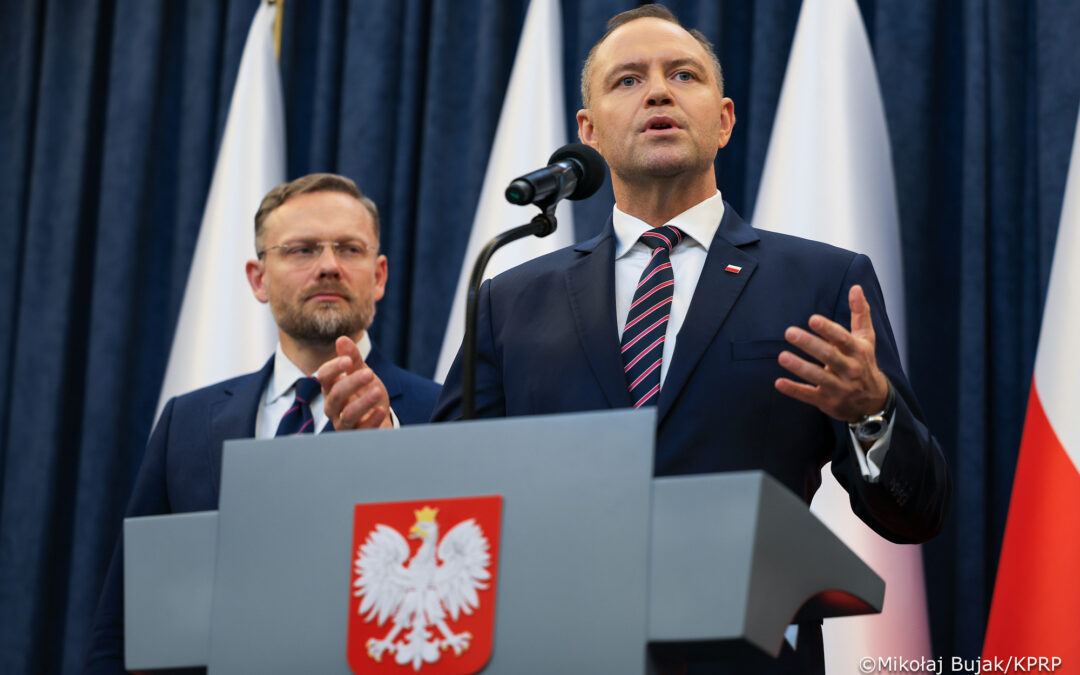Annual inflation reached 15.6% in June, the highest figure in over 25 years, according to initial estimates from Statistics Poland (GUS), a state agency. Poland has since last year been experiencing one of the European Union’s highest rates of inflation, which has accelerated amid Russia’s war in Ukraine.
The rises have been driven in particular by the prices of fuel (which in June rose 9.4% month-on-month and 46.7% year-on-year) and energy (up 3% m-o-m and 35.3% y-o-y), notes news service Onet. Food and drink costs rose 0.7% m-o-m and 14.1% y-o-y.
W czerwcu 2022 r. #ceny towarów i usług konsumpcyjnych wg szybkiego szacunku wzrosły w porównaniu do czerwca 2021 r. o 15,6% (wskaźnik cen 115,6), a w stosunku do maja 2022 r. wzrosły o 1,5% (wskaźnik cen 101,5). https://t.co/peSO6jkR3O#GUS #CPI #WskaźnikCen #inflacja pic.twitter.com/DxMNh5huZv
— GUS (@GUS_STAT) July 1, 2022
June’s figure follows a 13.9% annual rise recorded in May by GUS. Eurostat, which uses different methodology, put the May figure for Poland at 12.8%, which was the sixth highest figure in the EU and above the figure of 8.8% for the bloc as a whole.
In 2021, Poland recorded the EU’s joint highest level of inflation alongside Hungary. Eurostat also forecast (before the war in Ukraine) that it would again have the highest figure in 2022.
Euro area annual #inflation up to 8.1% in May https://t.co/0v4XMPvcbJ pic.twitter.com/YMxGlexwHM
— EU_Eurostat (@EU_Eurostat) June 17, 2022
Piotr Bielski, director of the economic analysis department at Santander Bank, told Business Insider Polska that inflation should now peak at around 16% this summer before falling later in the year and then rising again in early 2023. He forecasts average inflation this year of 13% followed by 10% in 2023.
“Core inflation still has a strong momentum, but in our opinion it should start to slow down in a few months due to a significant cooling of the economy and consumer demand,” said Bielski. “We expect a technical recession in Poland in the second half of 2022, which will have a cooling effect on the dynamics of wages and prices.”
Core inflation – a measure that excludes items with more volatile prices, such as food, fuel and energy – stood at 9.2% in Poland in June, note analysts at mBank.
The Polish government and central bank chief have faced criticism from the opposition over soaring prices. However, the authorities have responded by arguing that the situation is being caused by Russia’s actions in Ukraine, labelling it “Putinflation”.
The central bank has responded to surging inflation by last autumn beginning a series of increases in interest rates. Its benchmark rate was earlier this month raised by a further 75 basis points to reach 6%.
Poland's central bank has raised its benchmark interest rate by 75bps to 6% amid surging inflation.
It is the ninth increase since October last year and brings the rate to its highest level in almost 14 years. pic.twitter.com/gaJu2GBvDw
— Notes from Poland 🇵🇱 (@notesfrompoland) June 8, 2022

Daniel Tilles is editor-in-chief of Notes from Poland. He has written on Polish affairs for a wide range of publications, including Foreign Policy, POLITICO Europe, EUobserver and Dziennik Gazeta Prawna.




















